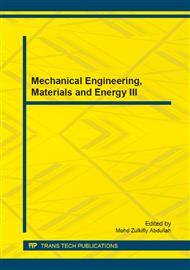p.3
p.9
p.14
p.18
p.23
p.28
p.34
p.38
A New Method of Parallel Projective Galvanometer Scanning for Laser Material Processing on Freeform Surfaces
Abstract:
A new method of parallel projection galvanometer scanning (PPGS) is presented, as a low-cost, flexible, trans-scale solution for laser material processing on freeform surfaces. The parallel projection transformation is used for mapping three-dimensional space curves to terraced two-dimensional plane graphics that each one is suitable for traditional galvanometer scanning method. For implementation of the PPGS method, a parallel projective laser scanning system with the combination of galvanometer and telecentric lens is needed, that the laser is directed along the space curve path on freeform surface part without deviation when the x-y axis galvanometer is scanning the mapping graphic path of the parallel projection plane. In practice, the existing 3D galvanometer scan system, "3+2" and rob-scan system are alternative choices in different application situations.
Info:
Periodical:
Pages:
9-13
Citation:
Online since:
December 2013
Authors:
Price:
Сopyright:
© 2014 Trans Tech Publications Ltd. All Rights Reserved
Share:
Citation:


